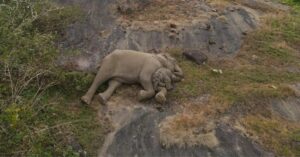Olive Ridley Turtles Have Better Chances of Survival Today, Thanks to These Odisha Villagers
Olive Ridley Turtles come back year after year to the place of their birth on the beaches of Odisha, to mate in the waters along the shore and lay their eggs in sandy nests. Conservationists and scientists are now educating the locals to help protect these endangered marine reptiles.
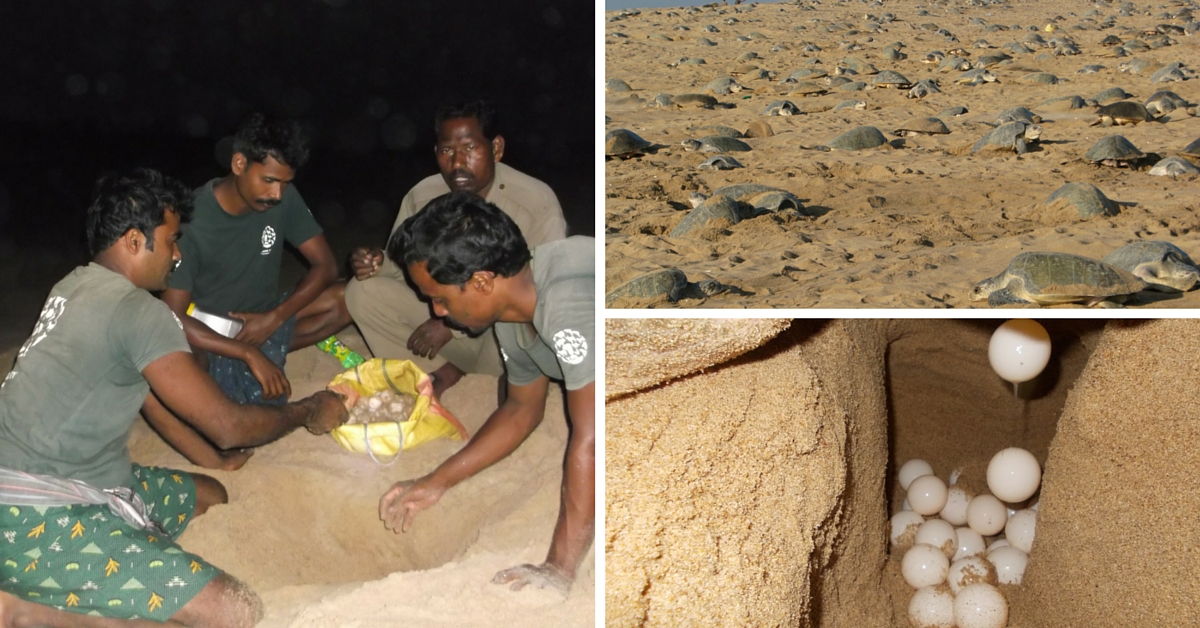
Olive Ridley Turtles come back year after year to the place of their birth on the beaches of Odisha, to mate in the waters along the shore and lay their eggs in sandy nests. Conservationists and scientists are now educating the locals to help protect these endangered marine reptiles.
In India, the Gahirmatha beach and the Rushikulya and Devi river mouths of Odisha are famous as the world’s largest Olive Ridley rookery. The Olive Ridley sea turtle, Lepidochelys Olivacea, which nests along the Odisha coast, is an endangered species even today. Scientific findings have revealed that 50% of the world population of Olive Ridley sea turtles is endemic to Odisha and 90% of the population of sea turtles along the Indian coastline comes to the Odisha coast for nesting.
Action for Protection of Wild Animals (APOWA) is an NGO established in 1999 after a devastating cyclone hit the coast of Odisha. This organisation partners with local communities in the state to help protect and conserve plants and animals in coastal Odisha.
One of the many projects they have undertaken is to protect and conserve the Olive Ridley sea turtles.
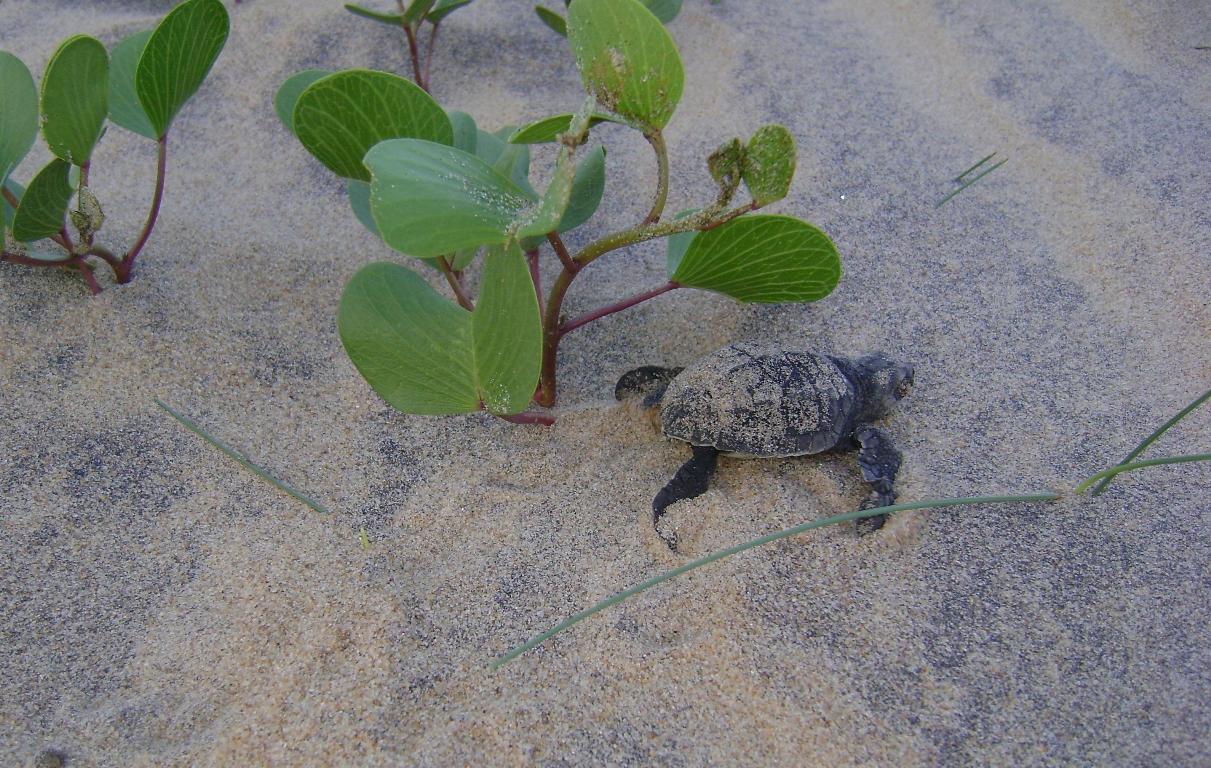
“After the Odisha cyclone caused a lot of damage to human life and property, as well as to the fauna and flora of the region, many organisations sprung up to protect and conserve nature’s assets in this area. Thousands of dead Olive Ridley turtles were washed up onto the beaches of Odisha at that time. However, there were some turtles that managed to survive the ravages of nature and did lay their eggs on the beaches. By the time the eggs hatched the cyclone was a long gone tale, hence, a few of the hatchlings managed to reach the sea and swim away,” says Pradeep Maity, one of the volunteers with APOWA, from Siali village.
In the early 1970s, when scientists first discovered the nesting grounds of the Olive Ridley sea turtles along the coast of Odisha, it was already time to seriously worry for these animals. Turtles would arrive onto the beaches in large numbers but only a few of their eggs would hatch. Of these hatchlings, a very small number would survive the rush to the waters. From then on, right till the end of the century, studies were being done to understand the Olive Ridley turtles, their life cycle, their mating habits and nesting preferences.
Some of the scientists took it upon themselves to spread awareness among the local population about the importance of conserving these turtles. But it was common practice for the locals to hunt them for meat and eggs.
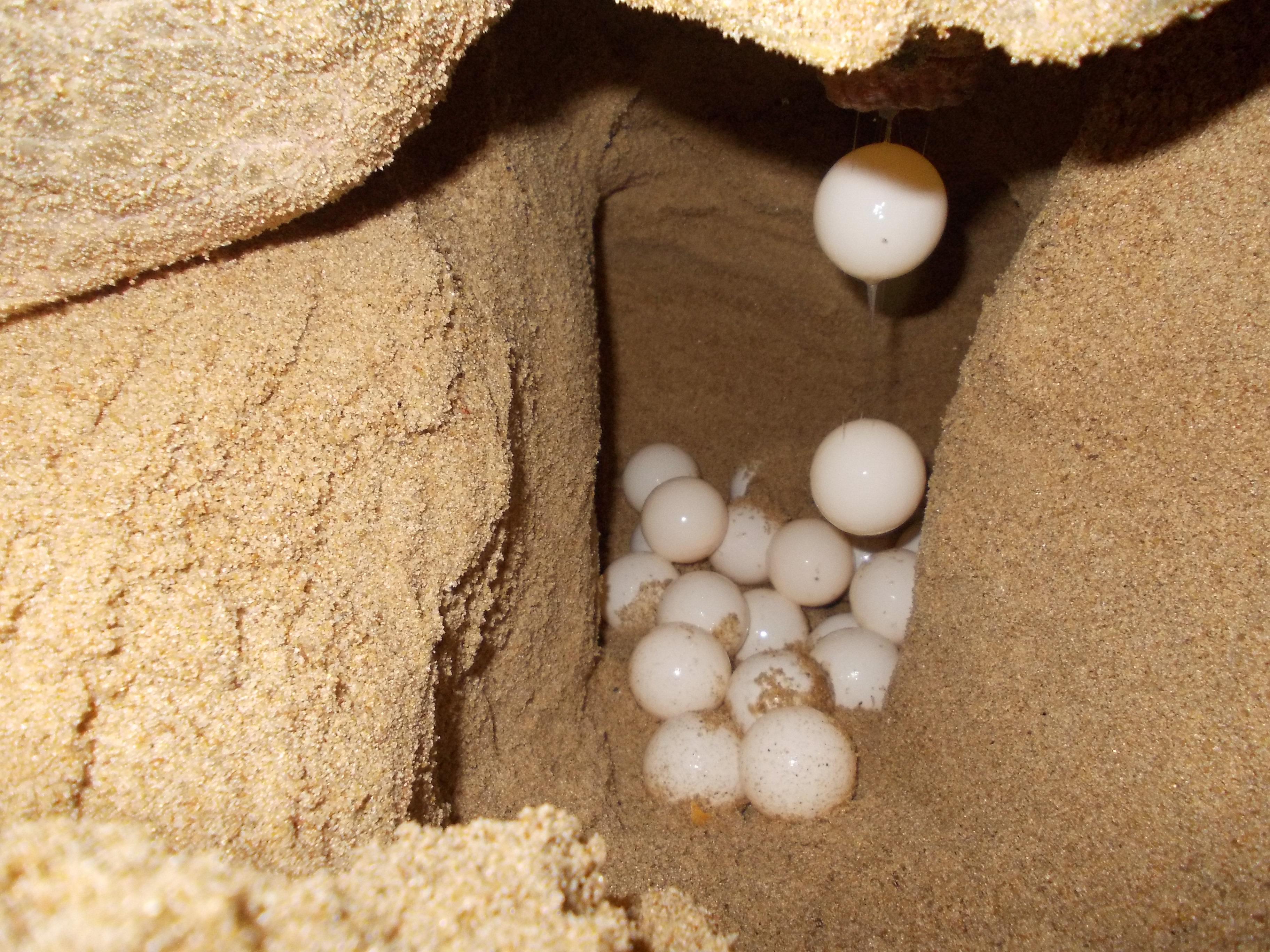
“With the turn of the century, the Forest Department and many other organisations have been taking a lot of interest in making sure they help to protect and conserve the Olive Ridley sea turtles. APOWA volunteers would initially visit the coastal villages and speak to the fishermen about how they can help to protect their marine guests during the nesting and hatching seasons. Community based conservation is the only way something substantial can be done for these creatures,” says Mr Bijaya Kumar Kabi, Director, APOWA.
The most interesting and unique behaviour pattern that the Olive Ridley sea turtle is famous for is arribada, a Spanish word for ‘arrival’. It is used commonly to explain the mass nesting behaviour of the Olive Ridley and the Kemp’s Ridley sea turtles. These two species of turtles are endemic to Mexico, Central America and India. No other species of turtles has this type of nesting behaviour.
Scientists refer to this phenomenon as ‘predator swamping’. They believe that the turtles have adopted this unique nesting behaviour only to help increase the chances of survival of their offspring’s. Hence, they lay more eggs than what their predators can consume.
When the hatchlings emerge, they rush to the waters in large numbers too, practising the same ‘predator swamping’ behaviour, overwhelming the predators waiting to eat them on the beach.
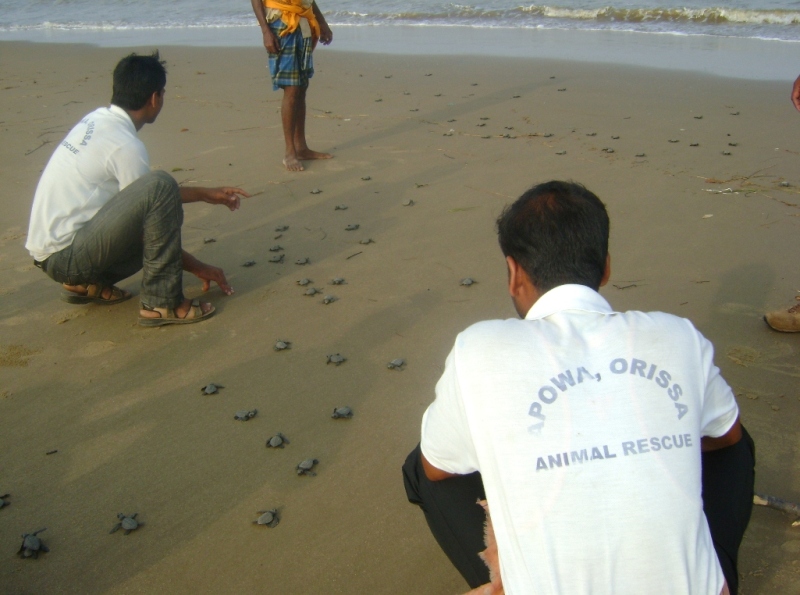
“‘Predator swamping’ probably helped these sea turtles to survive against their natural predators. But man is a totally different kind of predator. Turtle eggs were easy to pick up and available at no cost to the villagers, hence eating these horrible smelling eggs became a normal practice in these coastal villages. People even sold these eggs and they are considered a delicacy in many parts of the world. Turtles would get caught easily in fishing nets and would be sold for their meat,” adds Pradeep.
Male and female turtles come back to the waters along the coast from their various feeding grounds every year after the month of September. Mating happens in the sea itself and the males usually go back to their feeding grounds while the females linger around for almost a month till they are ready to lay their eggs.
Gravid females have the amazing ability to hold onto a large clutch of fully developed eggs until the natural elements permit arribada to take place. Sometimes, arribada happens twice in a season. The females lay their eggs in solitary sandy nests on the beaches and go back to the sea, swimming away to their feeding grounds.
The young ones hatch after 45 days and make a beeline for the sea waters in large numbers, trying to avoid being caught by predators like dogs and raptors.
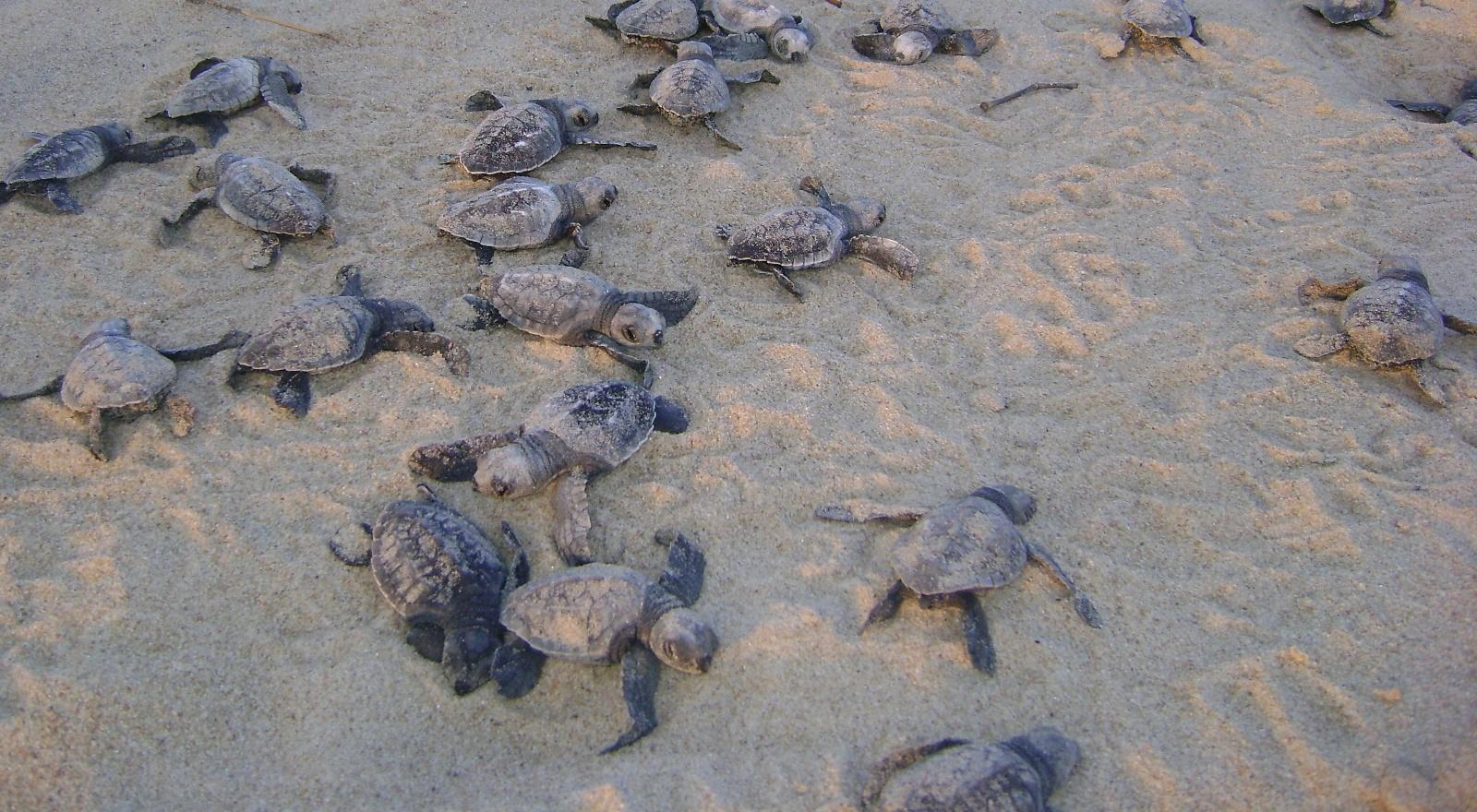
Ever since APOWA swung into action in the villages, there has been a sea change in the attitude of the locals towards these marine creatures. People have stopped eating the eggs Fishermen who find turtles caught in their nets have started to delicately help them untangle themselves and put them back into the waters. When the females come ashore on moonlit nights to lay their eggs, villagers make sure they do not disturb them and keep a watchful eye till they lay their eggs and go back to the sea.
“The locals help patrol the beaches day and night to make sure the nests are safe. The eggs are removed from the nests that are totally out of the way and are placed in makeshift nests, in man made hatcheries. When the eggs hatch, the hatchlings are allowed to surface on their own and under the watchful eyes of the villagers, the little turtles manage to run across the sands into the sea,” says Bijaya Kumar.
Fishing in the waters along these breeding beaches is prohibited from November right up to the end of May.

Humane Society International joined hands with APOWA in 2012 and ever since then the conservation and community education work has been a lot more streamlined. School children in the villages are given presentations on how important these turtles are in the marine food chain. School children too are involved in beach patrolling and beach cleaning activities.
With the communities as a whole getting involved in the protection and conservation of these wonderful creatures, there is hope for the Olive Ridley sea turtle to survive and thrive in the future.
For more information, log onto www.apowa.org or www.hsi.org
Like this story? Or have something to share? Write to us: [email protected], or connect with us on Facebook and Twitter (@thebetterindia).
Aparna Menon is a freelance writer, writing for various newspapers for the past 10 years. Her main fields of interest are wildlife, heritage and history. A keen traveler, she loves to read and write and does a lot of art work too.
This story made me
- 97
- 121
- 89
- 167
Tell Us More
We bring stories straight from the heart of India, to inspire millions and create a wave of impact. Our positive movement is growing bigger everyday, and we would love for you to join it.
Please contribute whatever you can, every little penny helps our team in bringing you more stories that support dreams and spread hope.






